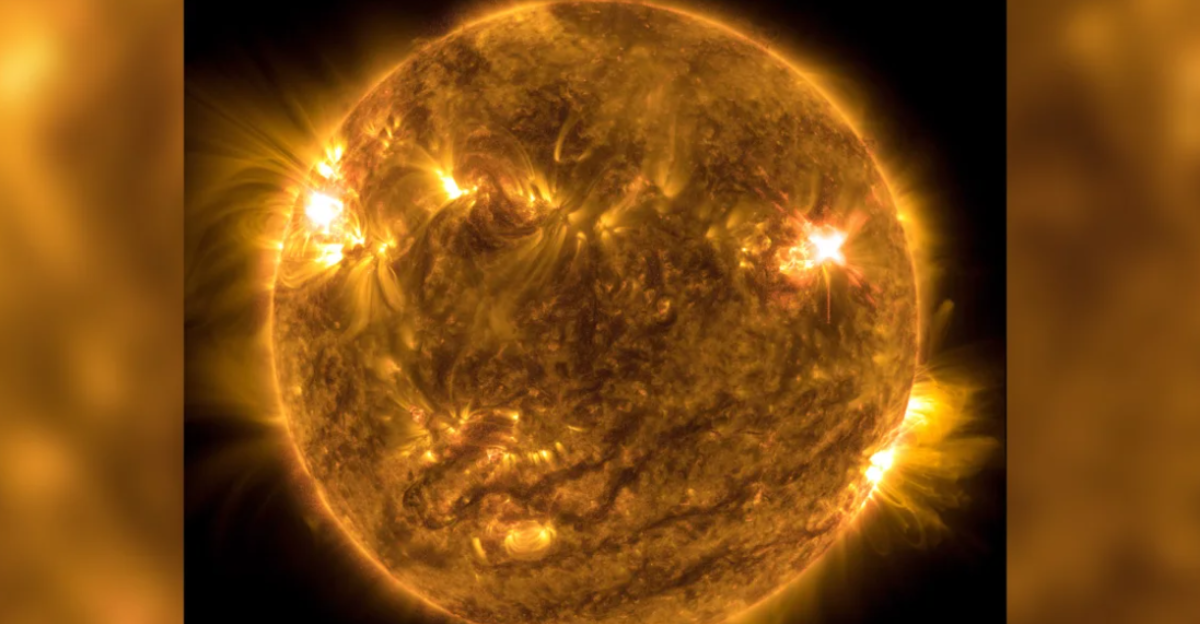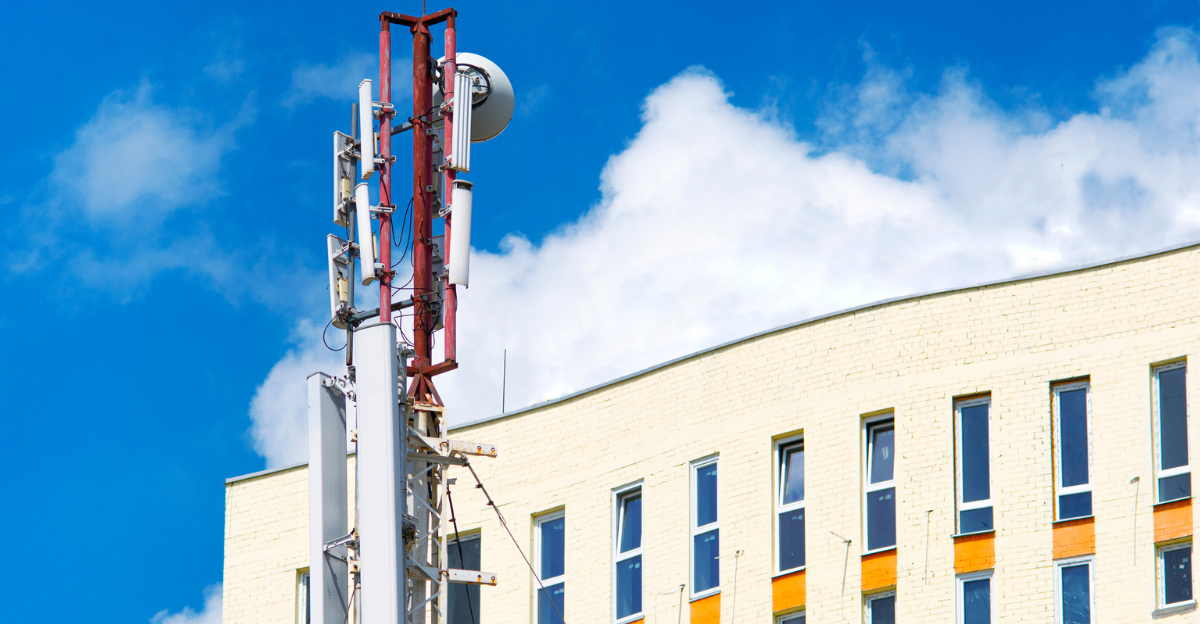
On June 17, 2025, the Sun unleashed a powerful X1.2-class solar flare from sunspot region 4114, which was directly facing Earth. This intense burst of energy prompted warnings for millions of Americans to stay indoors for three days due to increased radiation risks and communication disruptions. The flare caused immediate effects such as radio blackouts, especially over the Pacific Ocean and Hawaii, impacting aviation and amateur radio operations.
This event underscores the importance of understanding solar flares, as they can significantly affect Earth’s environment and modern technology, including satellites, power grids, and navigation systems. NASA’s Solar Dynamics Observatory captured detailed imagery of the flare, while NOAA issued alerts to help mitigate its impact. As solar activity intensifies during this solar cycle, such events remind us of the Sun’s power and the need for preparedness against space weather threats.
What Is an X1.2-Class Solar Flare?

Solar flares are classified by their X-ray brightness into categories A, B, C, M, and X, with X-class flares being the most intense. The number following the X indicates the flare’s strength within the class; an X1.2 flare is 1.2 times the baseline X1 intensity and 10 times stronger than an M1 flare. These flares release massive bursts of electromagnetic radiation, including X-rays, ultraviolet light, and charged particles.
The June 17 flare’s X1.2 rating places it at the lower end of the X-class scale but still powerful enough to disrupt radio communications and affect Earth’s upper atmosphere. Understanding this scale helps gauge the potential impact of solar events on Earth’s technological systems and environment.
Sunspot Region 4114

Sunspot region 4114 has been a prolific source of solar activity, producing multiple M- and X-class flares recently. This sunspot’s complex and unstable magnetic fields drive repeated flare eruptions, making it a “flare factory.” The magnetic instability causes energy buildup and sudden release as solar flares.
NOAA’s Space Weather Prediction Center and NASA’s Solar Dynamics Observatory closely monitor this region to track its activity and forecast potential impacts on Earth. The June 17 X1.2 flare was the strongest from 4114, highlighting the sunspot’s ongoing volatility and the potential for further intense solar events.
Radio Blackouts and Communication Disruptions

The June 17 X1.2 flare ionized Earth’s upper atmosphere, particularly the ionosphere, causing shortwave radio blackouts centered over the Pacific Ocean and Hawaii. Frequencies below 25 MHz, used by ham radio operators, pilots, and maritime communications, experienced significant signal loss.
Although the blackout was brief, lasting minutes, it disrupted critical communication channels for aviation and emergency services. Such radio blackouts occur because solar flares increase ionization, absorbing or scattering radio waves. These effects highlight the vulnerability of radio-dependent systems to solar activity and the importance of real-time monitoring for timely alerts.
Why Stay Indoors? Health and Safety Concerns

During intense solar flares like the X1.2 event, increased solar radiation, including ultraviolet and X-rays, reaches Earth’s sunlit side, elevating exposure risks. This heightened radiation can affect skin and eyes, potentially causing damage with prolonged outdoor exposure. Though Earth’s atmosphere shields most harmful radiation, the flare’s intensity prompted official advisories recommending people limit outdoor activities during peak flare times to reduce health risks.
Staying indoors minimizes direct exposure to increased radiation levels, especially for vulnerable populations. These precautions are part of broader public safety measures during intense solar events.
Potential for Coronal Mass Ejections (CMEs) and Geomagnetic Storms

Solar flares release electromagnetic radiation, but Coronal Mass Ejections (CMEs) are massive clouds of solar plasma and magnetic fields that can follow flares and cause geomagnetic storms upon hitting Earth. The June 17 X1.2 flare did not produce a CME directed at Earth, reducing immediate geomagnetic storm risks.
However, sunspot 4114’s ongoing activity raises concerns about future CMEs. When CMEs strike Earth’s magnetic field, they can trigger auroras at lower latitudes, disrupt power grids, damage satellites, and affect navigation systems. Monitoring for CMEs is crucial to anticipate and mitigate these potentially severe space weather effects.
Past Solar Flare Events and Their Impact

Historically, solar flares have caused significant technological disruptions. For example, the 2024 geomagnetic storms led to widespread radio blackouts and spectacular auroras. Compared to those events, the June 17, 2025, flare was intense but caused mostly temporary communication disruptions without severe geomagnetic storms.
Past solar maxima have shown that flare impacts can range from minor inconveniences to significant infrastructure challenges, emphasizing the need for preparedness. Lessons from previous cycles inform current monitoring and response strategies, helping to protect technology and infrastructure from future solar flare effects.
Solar Flares and Modern Technology

Solar flares impact more than just radio communications; they can disrupt GPS navigation, aviation systems, satellite operations, and power grids. As society becomes increasingly digital and interconnected, these vulnerabilities grow. For instance, GPS errors can affect everything from smartphone location services to airline navigation.
However, some experts argue that current technology has improved resilience, with built-in safeguards to handle moderate solar flare events without catastrophic failure. This contrarian view suggests that while solar flares pose risks, ongoing technological advancements and forecasting reduce the likelihood of widespread outages.
Scientific Monitoring and Forecasting Advances

NOAA’s Space Weather Prediction Center and NASA’s Solar Dynamics Observatory play key roles in the real-time monitoring of solar activity. Advances in satellite technology and data analysis enable earlier detection of flares and CMEs, improving forecast accuracy. These early warnings prepare governments, industries, and the public for potential disruptions.
International cooperation enhances space weather forecasting, sharing data globally to protect satellites, power grids, and communication networks. Continued investment in monitoring infrastructure is essential to mitigate the risks of solar storms in an increasingly technology-dependent world.
Staying Prepared Amid Solar Uncertainty

The June 17, 2025, X1.2 solar flare highlights the ongoing risks of sunspot 4114 and similar active regions. While immediate impacts were limited to radio blackouts and advisories to stay indoors, the event underscores the importance of public awareness and adherence to safety guidelines.
Investing in resilient infrastructure and maintaining vigilant space weather monitoring are crucial to minimize future disruptions. Following updates from official sources like NOAA and NASA helps individuals and industries stay informed and prepared. As solar activity rises, readiness remains our best defense against the Sun’s unpredictable power.
Explore more of our trending stories and hit Follow to keep them coming to your feed!

Don’t miss out on more stories like this! Hit the Follow button at the top of this article to stay updated with the latest news. Share your thoughts in the comments—we’d love to hear from you!







